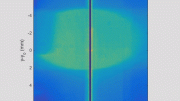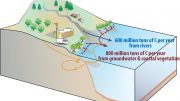
A comprehensive study reveals that 569,000 deaths in the WHO Region of the Americas in 2019 were linked to bacterial antimicrobial resistance (AMR). This alarming rate represents 11.5% of global AMR-associated deaths. The leading causes were bacterial respiratory and bloodstream infections. Countries without a public National Action Plan (NAP) for AMR showed higher mortality rates. The study underscores the urgency to address this health crisis, with experts comparing its threat to that of HIV/AIDS and malaria.
Over 43% of deaths related to infections in the region were linked to AMR.
569,000 deaths were linked to bacterial antimicrobial resistance (AMR) in all 35 countries of the WHO Region of the Americas, according to a new peer-reviewed paper recently published in The Lancet Regional Health – Americas. This analysis on the burden of AMR in the Americas is the most comprehensive yet for the region, providing data for 35 countries, 23 bacterial pathogens, and 88 pathogen-drug combinations.
The study estimates more than two of every five deaths (569,000) that involved infection in the Americas in 2019 were associated with AMR; that’s 11.5% of the global deaths associated with AMR. Associated deaths refer to drug-resistant infections that contributed to someone’s death, but resistance may or may not have been a factor as the person might have had other underlying conditions that were also responsible for their death. 141,000 deaths were attributable to AMR, making up 11.1% of the total global deaths attributable to AMR.
Attributable deaths are those in which people died precisely because their resistant infections were not treatable; in these cases, AMR is considered the cause of the death.
The four AMR-related infectious syndromes causing the most fatalities in the region were bacterial respiratory infections (293,000 deaths), bloodstream infections (266,000 deaths), intra-abdominal infections (181,000 deaths), and urinary tract infections (80,000 deaths). They accounted for 89% of deaths due to bacterial infection.
The six deadliest pathogens were Staphylococcus aureus, Escherichia coli, Klebsiella pneumoniae, Streptococcus pneumoniae, Pseudomonas aeruginosa, and Acinetobacter baumannii. These pathogens were responsible for 452,000 deaths associated with AMR.
Countries and AMR Mortality Rates
The five countries with the highest mortality rates associated with AMR were Haiti, Bolivia, Guatemala, Guyana, and Honduras. The countries with the lowest mortality rates associated with AMR were Canada, the US, Colombia, Cuba, Panama, Costa Rica, Chile, Venezuela, Uruguay, and Jamaica. The rankings by attributable mortality rate were generally similar, with Haiti having the highest mortality rate and Canada having the lowest.
AMR death rates by age for both associated and attributable burden had a similar pattern across countries. The estimates showed high rates of death among newborns followed by near zero rates in children under 5. Mortality slowly climbed until about age 65, at which point rates dramatically increased. The highest death rates among newborns were in Dominica, the Dominican Republic, Guyana, Haiti, Jamaica, Suriname, and Venezuela. Antigua and Barbuda, Argentina, Canada, Chile, and Costa Rica had the lowest AMR death rates among newborns.
Importance of National Action Plans
The nine countries with the highest mortality rates associated with AMR all either did not have an AMR National Action Plan (NAP) or had not published their AMR NAP. National action plans detail the ways in which governments can strive toward achieving the five objectives of the global action plan on antimicrobial resistance published by the World Health Organization. Chile, Colombia, Costa Rica, and the US were four of the five countries that had both published their AMR NAP and financed the plan in at least one year since 2018. They had some of the lowest AMR mortality rates.
“Bacteria have developed resistance against the medicines we invented to kill them, and these pathogens are instead killing people at rates that are higher than HIV/AIDS or malaria,” said co-author and researcher Lucien Swetschinski, Institute for Health Metrics and Evaluation (IHME). “If policymakers, clinicians, scientists, and even the general public don’t implement new measures now, this global health crisis will worsen and could become uncontrollable.”
AMR-associated infections were the third leading cause of death in Bolivia, Brazil, Chile, Haiti, the Dominican Republic, Uruguay, and Peru, after cardiovascular diseases and neoplasms, and fourth in 22 other American countries.
“Our research shows which countries in the Americas differed by type of infection, pathogen, antibiotic resistance, and age. That’s important information that will help those in power to take the necessary steps to enact new policies, improve sanitation, and develop new treatments to stop AMR in its tracks,” said co-author and researcher Dr. Gisela Robles Aguilar, University of Oxford. “We must also make a concerted effort globally, regionally, and locally to develop a strong surveillance network that keeps experts informed about what’s working and what’s not.”
Preventative Measures and IHME Initiatives
In countries with high rates of infectious deaths (e.g., from pneumonia, sepsis, meningitis), such as Haiti, Bolivia, and Peru, infection prevention and control could result in the greatest reduction in AMR burden. For countries with many resistant deaths among infectious deaths, such as Chile, Mexico, and Peru, strict AMR stewardship and surveillance are necessary.
Reference: “The burden of antimicrobial resistance in the Americas in 2019: a cross-country systematic analysis” by Gisela Robles Aguilar, Lucien R. Swetschinski, Nicole Davis Weaver, Kevin S. Ikuta, Tomislav Mestrovic, Authia P. Gray, Erin Chung, Eve E. Wool, Chieh Han, Anna Gershberg Hayoon, Daniel T. Araki, Ashkan Abdollahi, Ahmed Abu-Zaid, Mohammad Adnan, Ramesh Agarwal, Javad Aminian Dehkordi, Aleksandr Y. Aravkin, Demelash Areda, Ahmed Y. Azzam, Eitan N. Berezin, Akshaya Srikanth Bhagavathula, Zulfiqar A. Bhutta, Soumitra S. Bhuyan, Annie J. Browne, Carlos A. Castañeda-Orjuela, Eeshwar K. Chandrasekar, Patrick R. Ching, Xiaochen Dai, Gary L. Darmstadt, Fernando Pio De la Hoz, Nancy Diao, Daniel Diaz, Wendel Mombaque dos Santos, David Eyre, Coralith Garcia, Georgina Haines-Woodhouse, Mohammed Bheser Hassen, Nathaniel J. Henry, Susan Hopkins, Md Mahbub Hossain, Kenneth Chukwuemeka Iregbu, Chidozie C.D. Iwu, Jan Adriaan Jacobs, Mark M. Janko, Ronald Jones, Ibraheem M. Karaye, Ibrahim A. Khalil, Imteyaz A. Khan, Taimoor Khan, Jagdish Khubchandani, Suwimon Khusuwan, Adnan Kisa, Giscard Wilfried Koyaweda, Fiorella Krapp, Emmanuelle A.P. Kumaran, Hmwe Hmwe Kyu, Stephen S. Lim, Xuefeng Liu, Stephen Luby, Sandeep B. Maharaj, Christopher Maronga, Miquel Martorell, Jürgen May, Barney McManigal, Ali H. Mokdad, Catrin E. Moore, Ebrahim Mostafavi, Efrén Murillo-Zamora, Marisa Marcia Mussi-Pinhata, Ruchi Nanavati, Hasan Nassereldine, Zuhair S. Natto, Farah Naz Qamar, Virginia Nuñez-Samudio, Theresa J. Ochoa, Tolulope R. Ojo-Akosile, Andrew T. Olagunju, Antonio Olivas-Martinez, Edgar Ortiz-Brizuela, Pradthana Ounchanum, Jose L. Paredes, Venkata Suresh Patthipati, Shrikant Pawar, Marcos Pereira, Andrew Pollard, Alfredo Ponce-De-Leon, Elton Junio Sady Prates, Ibrahim Qattea, Luis Felipe Reyes, Emmanuel Roilides, Victor Daniel Rosenthal, Kristina E. Rudd, Weerawut Sangchan, Samroeng Seekaew, Allen Seylani, Niloufar Shababi, Sunder Sham, Jose Sifuentes-Osornio, Harpreet Singh, Andy Stergachis, Nidanuch Tasak, Nathan Y. Tat, Areerat Thaiprakong, Pascual R. Valdez, Dereje Y. Yada, Ismaeel Yunusa, Mikhail Sergeevich Zastrozhin, Simon I. Hay, Christiane Dolecek, Benn Sartorius, Christopher J.L. Murray AND Mohsen Naghavi, 8 August 2023, The Lancet Regional Health – Americas.
DOI: 10.1016/j.lana.2023.100561
After the global burden of bacterial AMR estimates were published in January 2022, IHME launched an interactive visualization tool to help raise awareness about the growing public health crisis. Two more peer-reviewed papers were also published: country-level estimates for the WHO European Region in The Lancet Public Health and the 33 bacterial pathogens in The Lancet. Researchers are preparing to release additional papers.
IHME also produced policy briefs for each of the 204 countries and territories studied. They are available online to help policymakers gain a better understanding of AMR’s toll and the strategies that could help reduce death and disability.
The findings were produced by the Global Research on Antimicrobial Resistance (GRAM) Project, a partnership between IHME and Oxford, supported by the UK Fleming Fund, the Wellcome Trust, and the Bill and Melinda Gates Foundation.
Researchers will present their findings at a panel session titled An Emerging Threat: AMR Burden at the Country Level at the World AMR Congress in Philadelphia, September 7-8.









Be the first to comment on "Silent Killer: AMR Linked to Over Half a Million Deaths in the Americas"